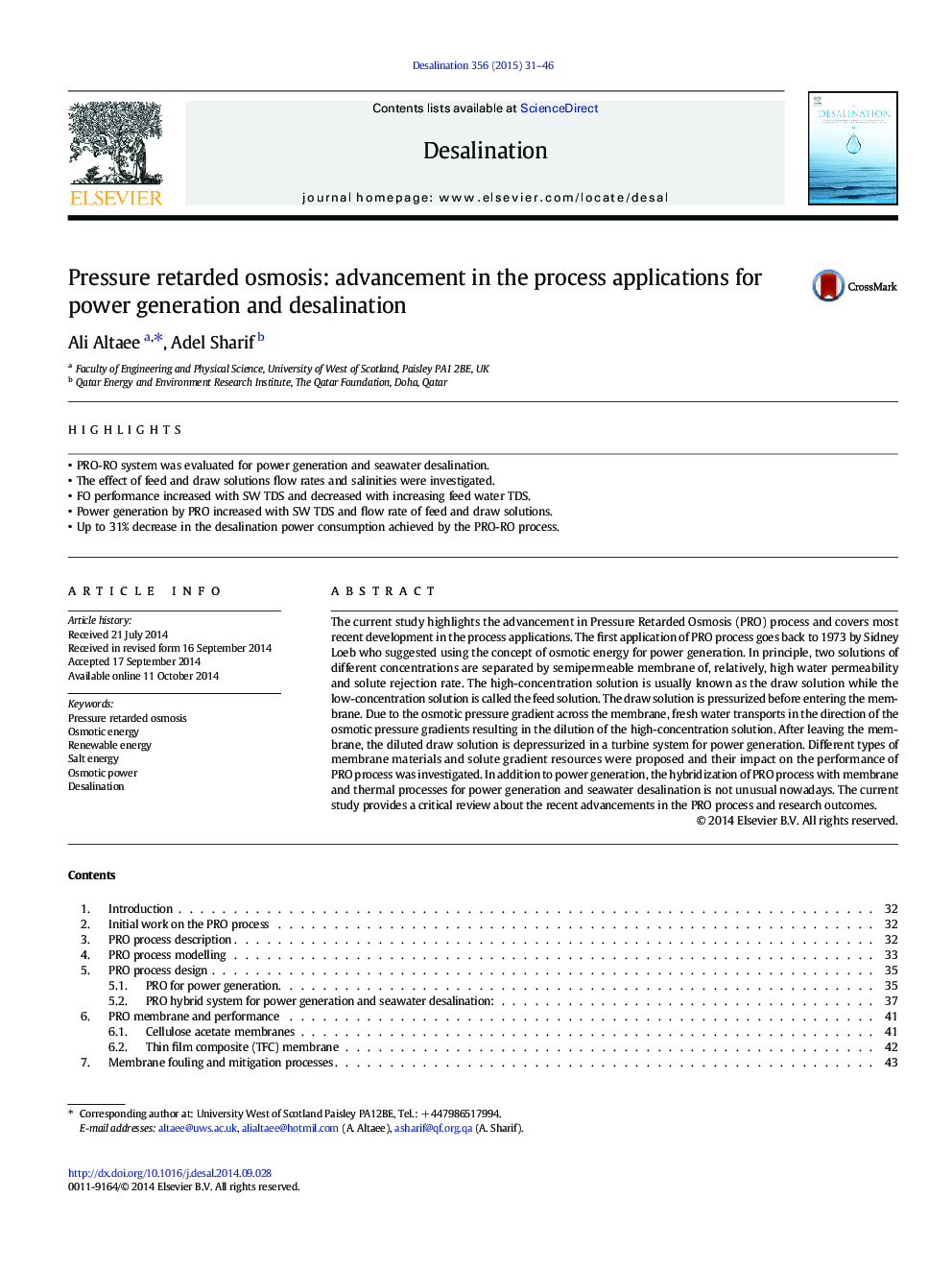| کد مقاله | کد نشریه | سال انتشار | مقاله انگلیسی | نسخه تمام متن |
|---|---|---|---|---|
| 623344 | 1455339 | 2015 | 16 صفحه PDF | دانلود رایگان |
• PRO-RO system was evaluated for power generation and seawater desalination.
• The effect of feed and draw solutions flow rates and salinities were investigated.
• FO performance increased with SW TDS and decreased with increasing feed water TDS.
• Power generation by PRO increased with SW TDS and flow rate of feed and draw solutions.
• Up to 31% decrease in the desalination power consumption achieved by the PRO-RO process.
The current study highlights the advancement in Pressure Retarded Osmosis (PRO) process and covers most recent development in the process applications. The first application of PRO process goes back to 1973 by Sidney Loeb who suggested using the concept of osmotic energy for power generation. In principle, two solutions of different concentrations are separated by semipermeable membrane of, relatively, high water permeability and solute rejection rate. The high-concentration solution is usually known as the draw solution while the low-concentration solution is called the feed solution. The draw solution is pressurized before entering the membrane. Due to the osmotic pressure gradient across the membrane, fresh water transports in the direction of the osmotic pressure gradients resulting in the dilution of the high-concentration solution. After leaving the membrane, the diluted draw solution is depressurized in a turbine system for power generation. Different types of membrane materials and solute gradient resources were proposed and their impact on the performance of PRO process was investigated. In addition to power generation, the hybridization of PRO process with membrane and thermal processes for power generation and seawater desalination is not unusual nowadays. The current study provides a critical review about the recent advancements in the PRO process and research outcomes.
Journal: Desalination - Volume 356, 15 January 2015, Pages 31–46
